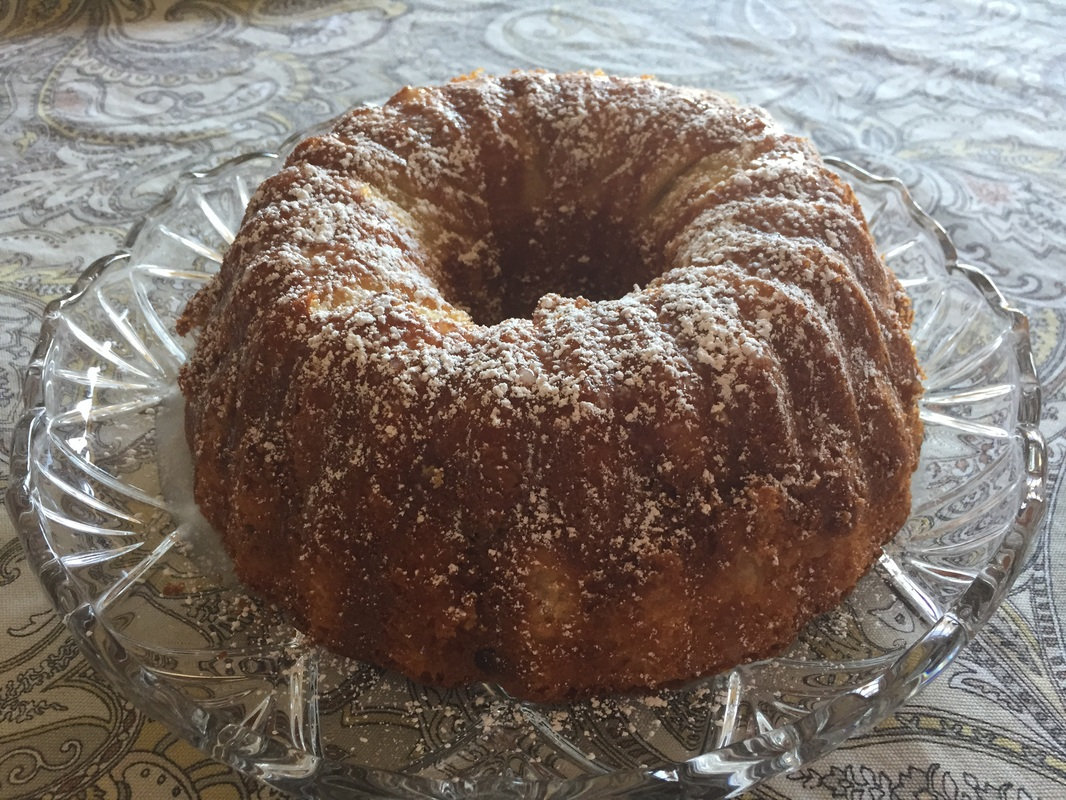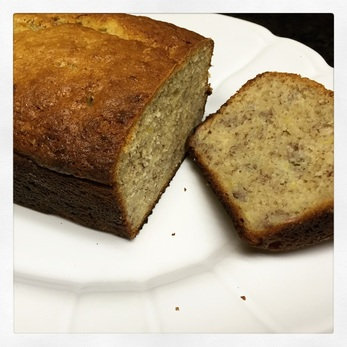Dishes made from eggs (symbolizing fertility, rebirth, spring, and the Resurrection) are a recurring theme on the tables of Easter-celebrating cultures around the world. For Eastern Europeans, sweet yeasty breads made with copious amounts of eggs, butter, sugar and sometimes cheese or cinnamon are a beloved way to celebrate the end of the strict Lent fasting period.
Each region has a slightly different version – some are braided or twisted, some include raisins, some include festively colored Easter eggs as a decoration. One of these breads, babka, typically made in a fluted tube pan, is a favorite for Polish and Ukrainian families. “Babka” means grandmother in Polish; “baba” is the colloquial Ukrainian word for woman or grandma, with “babka” the diminutive form. As per modern sources, the name comes from the shape of the pan, said to resemble the wide, circular skirts of a peasant woman. Older cookbooks say to use a straight, high pan so that the cake rises to a considerable height. When baking, the top runs over, and generally falls more on one side than another, giving the appearance of an old woman with her head drooping.
According to James Beard, egg breads were probably introduced to America with the traditional Jewish bread challah and the French brioche. In the nineteenth and twentieth centuries, simple egg breads were often found in Women’s Exchanges – an idea started in the 19th century by caring women who wanted to help others who had fallen on hard times. These women discretely placed their hand-made items and home-cooked food in Exchanges where they were sold. (Exchanges still exist today in a handful of cities, but instead of food, they mainly sell fine-quality, hand-crafted items).
Although babka recipes appear in a few nineteenth century London cookbooks, I couldn’t find any references to the bread in American cookbooks until the early twentieth century, probably a reflection of when Eastern Europeans began to emigrate to America in larger numbers. My grandmother’s family was in this demographic, having arrived from Poland around the turn of the century. Although I don’t recall her ever making this bread, I’m sure it factored into her family’s Easter celebration, and I wanted to give it a try myself. The rich, yeasty, delicious bread is perfect for an Easter brunch, or could be just as well suited for dessert. I found the recipe I followed, (from About Food’s Eastern European food expert Barbara Rolek), was easy and delicious. My only tweak was substituting a mix of dried cranberries and chopped dried apples for the raisins. In addition, a couple of my food testers commented that it was a little too sweet, so perhaps next time I will forgo the optional sugary glaze.
Babka
· Prep Time: 15 minutes
· Cook Time: 60 minutes
· Total Time: 75 minutes
· Yield: 1 (10-inch) Polish Easter Babka
INGREDIENTS
· 1 package active dry yeast
· 1/4 cup warm water (no hotter than 110 degrees)
· 1 cup scalded milk
· 6 ounces (1 1/2 sticks) butter
· 3/4 cup sugar
· 1/2 teaspoon salt (if using unsalted butter, increase salt to 1 teaspoon)
· 1 teaspoon vanilla
· 3 large beaten eggs
· 4 1/4 cups all-purpose flour
· 2 tablespoons lemon zest (optional)
· 1/2 to 1 cup light or dark raisins
· Confectioners' sugar (optional)
· Icing: (optional)
· 2/3 cup confectioners' sugar
· 2 tablespoons lemon juice
· 1 tablespoon boiling water
PREPARATION
1. In a small bowl, dissolve yeast in warm water. Place butter, sugar and salt in a large bowl or stand mixer, and pour the scalded milk over it. Using the paddle attachment, mix until butter has melted and milk has cooled to 110 degrees or below. Mix in the vanilla and eggs. Add yeast and mix until well combined.
2. Add the flour, lemon zest (if using), and raisins and mix thoroughly. The dough will be of a thick cake batter consistency.
3. Heat oven to 350 degrees. Lightly coat a 10-inch babka pan, kugelhopf pan, Turk's head pan (turban pan), Bundt pan or tube pan with cooking spray. Pour batter into prepared pan and cover lightly with greased plastic wrap. Let rise in a warm place until double in bulk or until dough reaches the top of the pan but no higher.
4. Bake about 40-45 minutes or until toothpick inserted near center comes out clean, or until instant-read thermometer registers 190 degrees.
5. Cool on a wire rack and dust with confectioners' sugar before serving or, when cake is cool, drizzle with a mixture of confectioners' sugar, lemon juice and boiling water.
Sources: "Easy Easter Babka Recipe - Polish Babka Wielkanocna" by Barbara Rolek; The Oxford Companion to Food by Alan Davidson; American Cookery by James Beard; A Handbook of Foreign Cookery, Principally French, German and Danish By Amalia von Hochheim







0 Comments